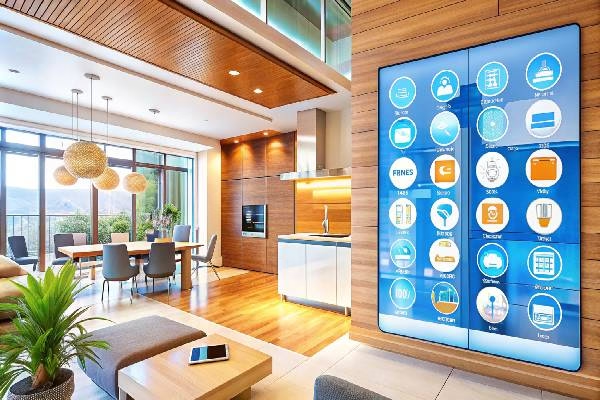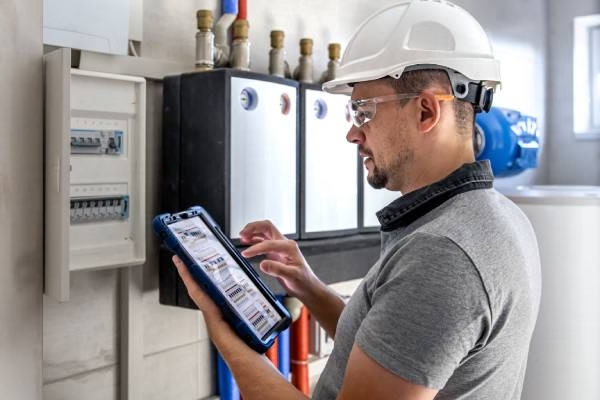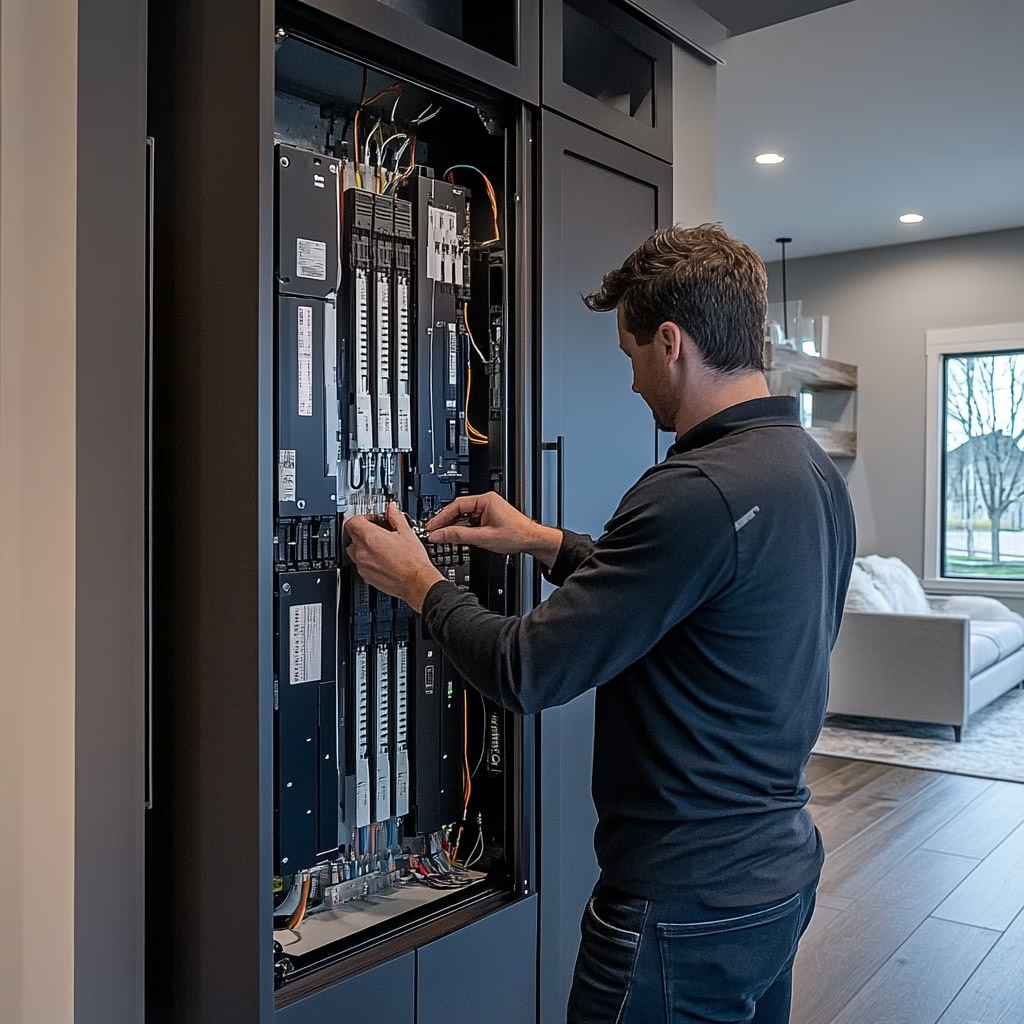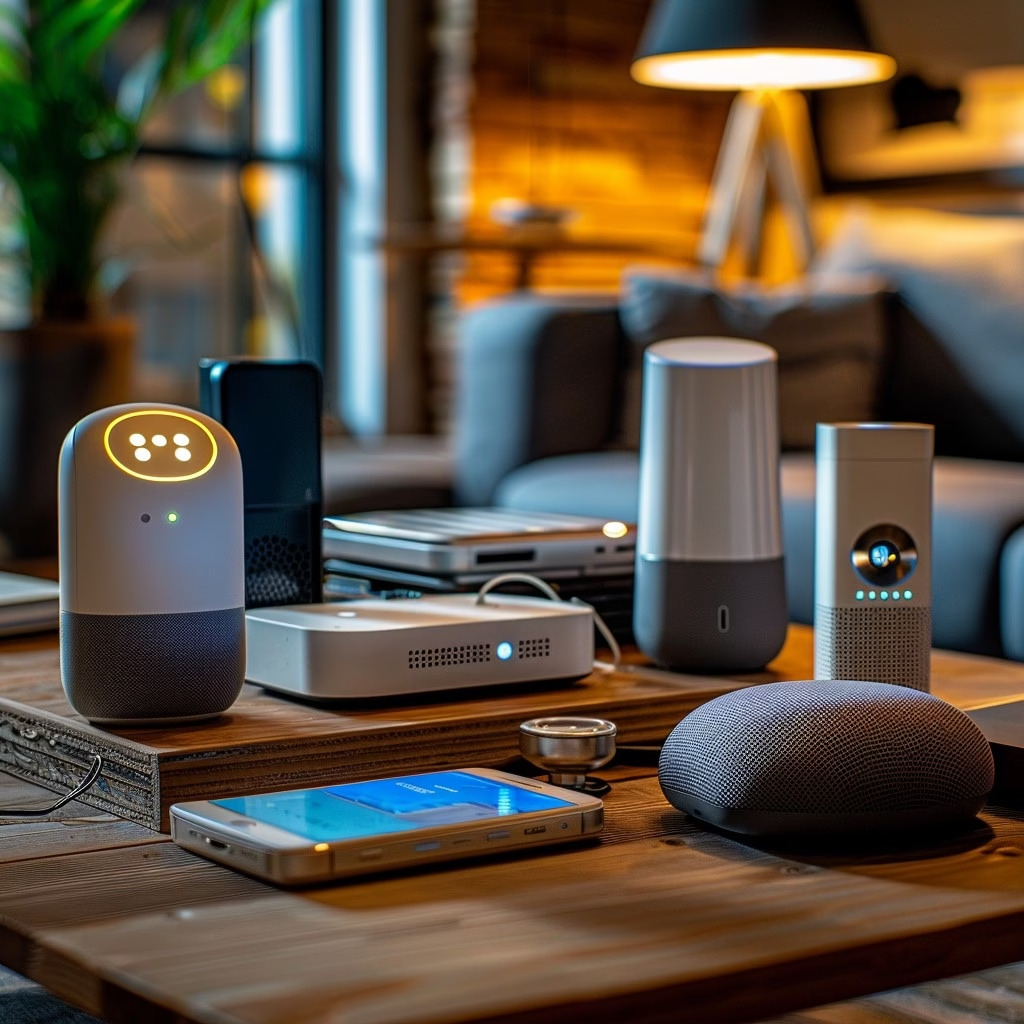Introduction
Home energy management systems (HEMS) operates as a smart system which helps homeowners to monitor and control their energy consumption. Smart devices including thermostats and appliances and plugs link to this system for electrical consumption management.
Types of Appliances That Can Be Controlled Using HEMS
• HVAC systems
• Refrigerators
• Washing machines
• Smart lighting
• Home security systems
• Entertainment devices
How Does a HEMS Help in Reducing Energy Consumption?
Use of smart technology enables the Home Energy Management Systems to help people reduce their total electricity usage. The system operates energy consumption only during required times to minimize unnecessary use.
Automatic Power Scheduling
Home Energy Management Systems enables users to establish time-based scheduling for their appliances. The system schedules the termination of nonessential lights and appliances during your typical 8 AM departure period. The system stops power usage from being unnecessary during unoccupied home periods.
Adjusting Settings Based on Usage
True daily routines enable the system to modify device settings automatically. Home Energy Management Systems becomes able to switch off your air conditioner at night automatically after you teach it your usual routine. Such a setup enables users to consume electricity up to the necessary extent.
Smart Device Integration
Computerized devices that include smart thermostats and smart plugs function through HEMS platform. A smart thermostat functions through temperature monitoring which eliminates heating or cooling runtimes beyond what is needed. Home Energy Management Systems devices contain built-in programs to shut off devices automatically after sensing their non-operation.
Reducing Energy Waste
Numerous individuals fail to turn off their lighting devices and fans and other electric devices after exiting the room. HEMS detects device non-use automatically so it can disable unnecessary equipment. This single minor modification helps conserve significant amounts of electricity in the long run.
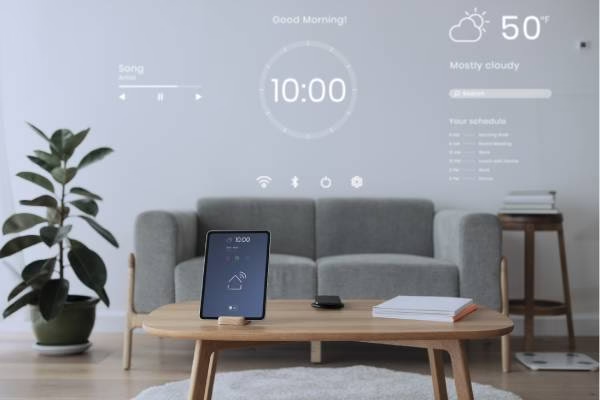
What Are the Key Components of HEMS?
Home Energy Management Systems (HEMS) consists of multiple devices together with tools which aid in electricity conservation. The various elements within the system actively manage energy consumption by assigning important functions in the control process.
Electrical Usage Measurement through Smart Meters
A smart meter tracks electricity consumption in real-time operations. The device displays power consumption information through screens connected to applications that help house owners detect their energy-hogging appliances. The monitoring system enables homeowners to make decisions leading to reduced waste.
A Smart Thermostat Enables Homeowners to Set Home Temperature Remotely
Through intelligent automatic temperature adjustment, the smart thermostat operates as a device for temperature management in homes.
Smart systems operate temperature controls automatically through weather-based and time-based parameters. During nighttime sleep hours, the smart system reduces heating temperatures, thus reducing electricity consumption.
Smart Plugs – Remote Control of Devices
Regular home power outlets receive connection from smart plugs, which serve as compact electronic devices. People can manage appliance power status by using their smartphones through this system. Users can activate lamp and fan power during any moment with a single touch of their smartphone.
Smart Devices Will Operate Appliances Exactly When They Are Required
Home Energy Management Systems provides a mechanism to determine the activation and deactivation times of specific devices. A coffee brewer activates automatically throughout morning hours before you get up, and the lighting system turns off automatically when areas become vacant. This reduces unnecessary power use.
Energy Monitoring Apps – Insights and Control
Modern Home Energy Management Systems systems offer an application which shows power usage summaries. The applications display which equipment draws the most power while offering recommendations to decrease electricity consumption. The mobile apps enable users to gain control of linked devices from remote locations.
How Does HEMS Differ from a Traditional Energy Monitoring System?
The standard energy monitoring system reveals only the amount of electricity that consumers use. The system enables homeowners to view energy consumption yet lacks features for minimizing energy waste.
The Technology Known as Home Energy Management System (HEMS)
Home Energy Management Systems (HEMS) performs multiple advanced functions. HEMS functions to monitor both energy usage along with automating its control methods.
The system enables automated device shutoff when items are not in use while it automatically regulates the home temperature and operates all smart home controllers. Such a system enables users to save electricity without requiring additional work.
How Can HEMS Optimize Electricity Usage in a Smart Home?
Through its implementation of advanced technology, Home Energy Management Systems implements systems to decrease energy waste. Through monitoring schedules plus sensors, HEMS operates home lighting systems and manages heat and cooling together with various appliances in the house.
Automatic Lighting Control
HEMS features automatic light control that both activates illumination upon entering a room as well as turns them off automatically when vacancy is detected. The system turns off lights automatically when users leave the room.
Temperature Adjustment
The smart thermostat connected to HEMS uses both weather conditions and day schedules to modify indoor temperatures automatically. The technology can reduce heating during nighttime or disable the air conditioner during periods of unoccupied residence. This reduces electricity consumption.
Managing Appliances Efficiently
HEMS operates washing machines and dishwashers along with water heaters at periods that minimize electrical consumption. The system operates appliances at specific times because electricity rates are inexpensive in order to optimize savings.
Smart Plugs Come in Handy for Gaining Enhanced Management Capabilities
Users have access to distant control of their appliances through smart plugs. The mobile application enables users to shut off fans or television from anywhere when they discover their lights left on.
What Role Do Smart Meters Play in HEMS?
A Home Energy Management System (HEMS) contains smart meters which act as its crucial component. These systems both measure current power usage in real time and provide homeowners with better understanding of their electricity consumption data.
Smart Meters Have the Ability to Pinpoint Exact Areas Where Electricity Flows into Waste
Smart meters track excessive power usage by devices, which allows it to detect and report their findings. Houseowners obtain the data they need to make decisions that minimize their excessive energy usage. The data from smart meters gets transmitted to the HEMS, which enables automatic system modifications.
The information collected by smart meters enables the HEMS to automatically manage appliance operation through power shifting so usage occurs during lower-cost time periods. The combination improves both energy management operations and decreases associated costs.
How Does AI and Machine Learning Enhance the Efficiency of HEMS?
HEMS receives intelligence boosts through Artificial Intelligence (AI) and Machine Learning (ML) capabilities, which process historical energy data. AI functions as a prediction tool for electrical consumption patterns, and machine learning enables the system to improve its performance by learning user routine patterns.
The system captures the standard family practice of heating activation at 7 PM so it can automatically modify its operational schedules. The system will reduce heating levels when there is no resident in the house to minimize energy waste. The system develops better efficiency through improved decision-making that relies on genuine usage information.
The detection of homeowner unnoticed patterns through AI leads to decreased energy waste. Through system monitoring the device usage and state, the system can activate power-saving measures and device power-offs.
What Are the Environmental Benefits of Using HEMS?
A Home Energy Management System (HEMS) operates as an environmental aid by minimizing home energy waste. The careful utilization of energy results in reduced wasted electricity production, thereby lowering carbon emissions. Less high-polluting gas emissions enable a slower rate of climate change.
HEMS Effectively Operate Together with Renewable Energy Systems Such as Solar Panels
HEMS optimizing sun-generated energy usage prevents homeowners from depending on power plant-generated electricity for their needs. HEMS enable the reduction of fossil fuel consumption because it helps protect the environment.
The implementation of HEMS allows users to save natural resources through more effective energy management. The reduction of power utilization results in lesser coal and gas consumption within power generation facilities to produce electricity. Through its operation, the system produces cleaner air, which benefits all inhabitants of the planet.
How Difficult Is It to Install HEMS in an Existing Home?
The installation process of a HEMS system within an existing house remains straightforward for most homeowners. Most HEMS devices, such as smart plugs together with smart thermostats, can be installed without requiring professional assistance.
Homeowners can easily install HEMS using two methods: ordinary power plugs and mobile applications for Wi-Fi connection.A smart meter installation usually requires assistance from an energy provider to carry out the process.
A professional must install the HEMS system because it requires a direct connection to the home electricity supply. After HEMS installation, the system operates automatically without requiring frequent servicing.
Does HEMS Technology Have Compatibility with Speech Console Solutions Like Alexa and Google Assistant?
Yes! The Home Energy Management System enables connectivity to voice assistants, which include Alexa as well as Google Assistant and Siri. Homeowners can operate their house energy systems through basic voice commands using this system.
The voice commands for HEMS include saying “Alexa, turn off the lights,” but Google Assistant users can use “Hey Google, set the thermostat to 22 degrees.” The system enables users to control their energy consumption by voice commands.
What Are the Common Challenges Homeowners Face When Implementing a HEMS?
A Home Energy Management System (HEMS) installation can conserve electricity, yet homeowners likely need to overcome some difficulties when using it. The following list summarizes typical problems homeowners encounter when using Home Energy Management System.
High Initial Costs for Smart Devices
Smart thermostats and smart plugs become expensive to buy for the initial purchase phase. People who purchase these devices worry about the initial cost because the devices will eventually decrease their power bills.
People usually recover their upfront expenses through reduced energy bills, thus making smart devices profitable in the future.
Compatibility Issues Between Different Brands
Each smart device functions independently from other products in the market. Home Energy Management System often fails to successfully connect homeowner-purchased devices when these products utilize different brands.
Within Home Energy Management System, separate brands of smart thermostats and smart meters cannot communicate effectively with one another. Users should select technological devices which manufacturers purposely developed for interconnectivity.
Using Smart Energy Apps Demands New Users to Learn Their Operations
Cellular apps are included with Home Energy Management System, which help users track their energy consumption data. The initial use of smart energy applications might pose difficulties to certain individuals.
Mastering Home Energy Management System structure configuration and setting modifications, along with reviewing energy metrics, requires users to invest training time. Most smart energy applications provide accessible guidance and customer assistance to guide homeowners during their setup process.
Internet Dependency for Remote Control
An internet connection serves as a requirement for the proper functionality of most helicopter emergency medical services systems. In the event that Wi-Fi connectivity fails, the remote controls and live energy monitoring features become unavailable to homeowners.
Reviewing smart device control can become annoying, particularly for consumers relying on energy management through smart devices. The optimal system experience depends on a steady internet connection because many systems only operate with an active internet connection.
What Are the Cybersecurity Levels and Hacking Protection Capabilities of HEMS?
Home Energy Management System use internet connectivity, so owners face the possibility of their system getting hacked. The majority of Home Energy Management System include united security features which defend against cyber intrusions.
The most vital security element of Home Energy Management System technology is encryption, which prevents unauthorized users from reading transmitted data. All device-to-device transmissions are encrypted through scrambling functions to prevent hackers from reading the information.
The system security benefits from regular software updates since these updates repair existing security vulnerabilities.To enhance their home security system, homeowners need to set up complex passwords for all their smart devices and wireless networks.
A protected password should contain at least three different elements among letters, symbols, and numbers. It is unwise to use basic passwords such as “123456” and “password” when establishing security measures.
People should protect themselves by connecting to protected wireless networks. A well-secured Wi-Fi password strengthens the protection against hacker intrusion. Users should activate two-factor authentication (2FA) whenever their HEMS application enables this additional security feature.
Exponential security protection results from implementing this measure.The implementation of the mentioned security guidelines protects homeowners’ HEMS against cyber attacks.
What Privacy Concerns Should Users Be Aware of When Using HEMS?
The HEMS system tracks power consumption figures, which enable homeowners to lower their energy costs. The HEMS system records several pieces of energy usage data, such as appliance operation times along with consumed energy and daily behavior patterns.
The helpful information generates concerns regarding user privacy.Users need to study the privacy policy of their HEMS provider to understand proper data storage practices as well as data-sharing operations.
Specific companies apply collected data for marketing needs but also pursue research aims. Users should select HEMS systems which honor privacy standards and keep customer information away from external data sales.
Homeowners should use their HEMS app settings to restrict data sharing procedures in order to improve privacy levels. Using HEMS, users must schedule routine security updates because these updates secure personal information.
What Are the Latest Trends in Home Energy Management Technology?
HEMS technology keeps getting better through yearly developments of new systems. These innovative changes enable homeowners to gain better efficiency from their energy use and develop more intelligent home interiors.
AI-Driven Automation
Artificial Intelligence (AI) improves the communication capabilities of HEMS systems. HEMS technology learns typical energy consumption behavior to produce automated adjustments.
The system learns that people use the heater during evening hours; thus, it automatically activates it in advance when no user commands it. Efficient home operation becomes possible through automated energy savings, which lowers household power consumption.
Renewable Energy Integration
To match the growing solar panels and wind energy capability, more HEMS systems integrate better control functions. Renewable energy storage and use functionality through HEMS allows homeowners to benefit from their energy sources in optimal periods.
Solar power that becomes available during daytime allows the system to save energy in batteries until night falls. The reduced usage of power grid electricity combined with lower energy costs becomes possible through this system.
Advanced Smart Meters
Smart meters of the new generation provide enhanced performance and stronger security features. The devices deliver immediate electricity usage statistics together with warning signs for abnormal power consumption.
Some devices equipped with modern monitoring systems can notify homeowners when specific devices draw excessive power, enabling them to stop unnecessary resource use. Smart meters feature improved security systems designed to stop hackers from accessing the system.
More Efficient Smart Plugs
Smart plugs demonstrate better capabilities for monitoring energy usage. Present-day models can provide specific details about the quantity of electricity each appliance consumes.
Homeowners can use these devices to develop auto schedules that turn their devices off during periods of non-use. A simple alteration will eventually result in significant conservation of energy.
Numerous people hold concerns about health hazards from smart meter radio signals but there exists no valid scientific backing to validate these suspicions. A few parts of the country have made the decision to prohibit installation of smart meters because of health-related worries.
Conclusion
HEMS technology helps organizations minimize energy waste while reducing expenses while making their operations environmentally friendly. People can operate and enhance their home energy systems through the combination of smart meters together with smart plugs alongside AI automatic control.
HEMS systems will prove their necessity in future residential technology because of continuous advancements in technology.
Frequently Asked Questions
What is a Home Energy Management Systems (HEMS)?
Home Energy Management Systems is a system that monitors, controls, and optimizes energy use in a home for efficiency and cost savings.
How does Home Energy Management Systems work?
It collects data from smart meters and connected devices to analyze energy consumption and adjust usage accordingly.
What are the benefits of using Home Energy Management Systems?
It helps reduce energy waste, lower utility bills, and enhance sustainability.
Can Home Energy Management Systems work with renewable energy sources?
Yes, it can integrate with solar panels and battery storage systems to maximize energy efficiency.
Do I need smart appliances for Home Energy Management Systems?
While smart appliances improve efficiency, Home Energy Management Systems can also work with standard electrical devices through smart plugs and sensors.
Is a HEMS expensive to install?
Costs vary, but many systems are affordable and provide long-term savings on energy bills.
Can Home Energy Management Systems help reduce my electricity bill?
Yes, by optimizing energy consumption and reducing waste, it can lower monthly electricity costs.
Is Home Energy Management Systems difficult to set up?
Most systems are user-friendly and come with apps for easy setup and control.
Does Home Energy Management Systems require an internet connection?
Many systems use Wi-Fi or Bluetooth for remote access, but some can function offline with limited features.
Can I control my Home Energy Management Systems remotely?
Yes, most systems offer mobile apps for monitoring and controlling energy use from anywhere.
Does Home Energy Management Systems improve home security?
Some Home Energy Management Systems include security features like smart locks, motion sensors, and surveillance integration.
What appliances can Home Energy Management Systems control?
It can manage lighting, HVAC systems, refrigerators, water heaters, and more.
Is Home Energy Management Systems compatible with smart assistants like Alexa or Google Home?
Many systems integrate with voice assistants for hands-free control.
Can Home Energy Management Systems track my energy usage in real-time?
Yes, most systems provide real-time energy consumption insights and reports.
Does Home Energy Management Systems work with all electricity providers?
Most systems are compatible, but it’s best to check with your provider for specific integrations.
Can Home Energy Management Systems prevent energy wastage?
Yes, by automating schedules and detecting inefficient usage, it helps reduce energy waste.
Will Home Energy Management Systems work during a power outage?
It depends on the system, but some can operate with backup batteries or generators.
Can renters use a HEMS?
Yes, there are portable and non-invasive Home Energy Management Systems options suitable for renters.
Does Home Energy Management Systems require professional installation?
Some systems need professional setup, but many offer DIY installation.
Are Home Energy Management Systems environmentally friendly?
Yes, by optimizing energy use and integrating renewables, it helps reduce carbon footprints.

